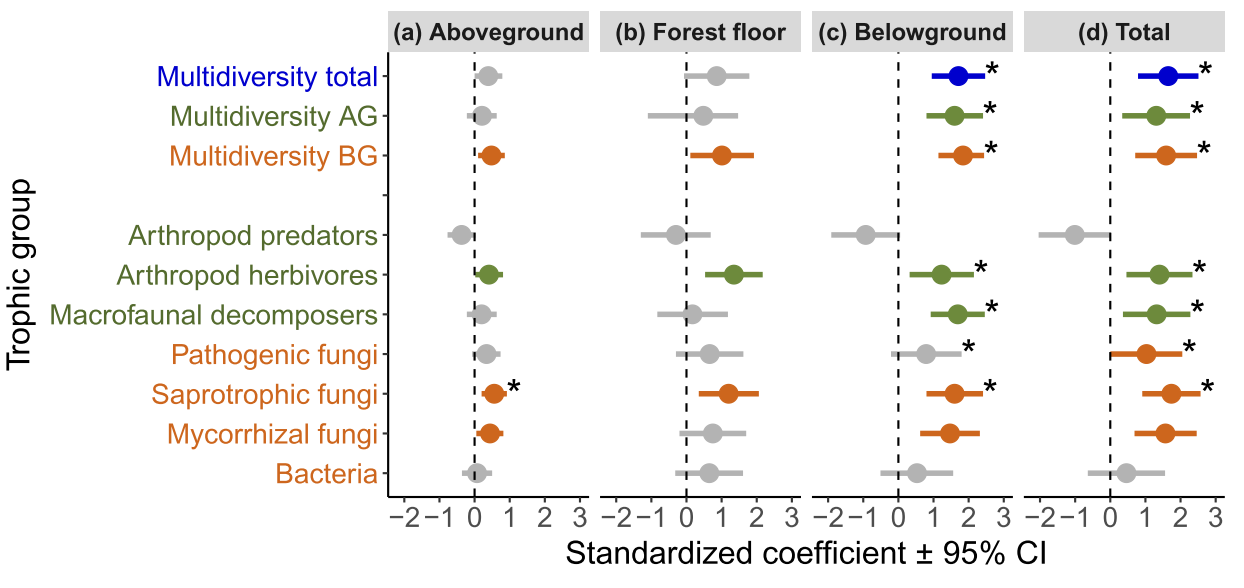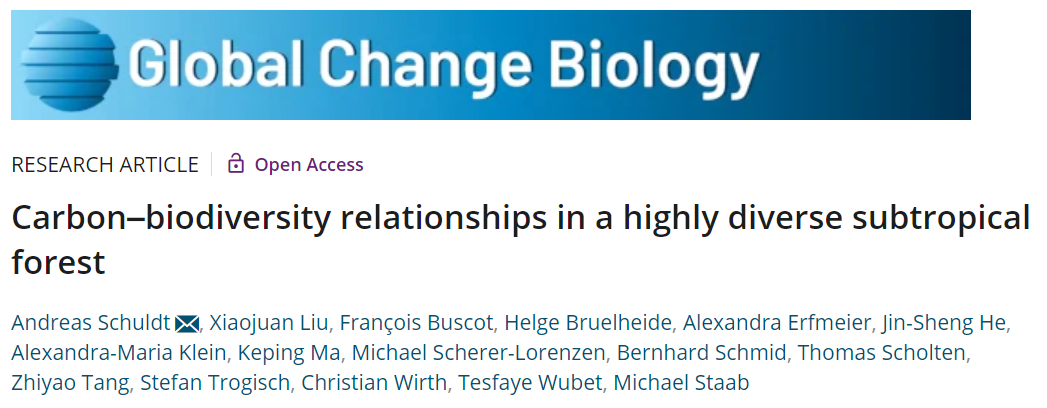Carbon-focused climate mitigation strategies are becoming increasingly important in forests. However, with ongoing biodiversity declines we require better knowledge of how much such strategies account for biodiversity. We particularly lack information across multiple trophic levels and on established forests, where the interplay between carbon stocks, stand age and tree diversity might influence carbon–biodiversity relationships. Using a large dataset (>4600 heterotrophic species of 23 taxonomic groups) from secondary, subtropical forests, we tested how multitrophic diversity and diversity within trophic groups relate to aboveground, belowground and total carbon stocks at different levels of tree species richness and stand age. Our study revealed that aboveground carbon, the key component of climate-based management, was largely unrelated to multitrophic diversity. By contrast, total carbon stocks—i.e. including belowground carbon—emerged as a significant predictor of multitrophic diversity. Relationships were non-linear and strongest for lower trophic levels, but non-significant for higher trophic level diversity. Tree species richness and stand age moderated these relationships, suggesting long-term regeneration of forests may be particularly effective in reconciling carbon and biodiversity targets. Our findings highlight that biodiversity benefits of climate-oriented management need to be evaluated carefully, and only maximizing aboveground carbon may fail to account for biodiversity conservation requirements.

Fig. 1. Effect sizes of the relationships of biodiversity of seven aboveground (green) and belowground (brown) trophic groups as well as average multidiversity measures across all trophic groups with carbon stocks in different forest compartments: a) aboveground carbon (plant biomass), b) forest-floor carbon (dead wood and leaf litter), c) belowground carbon (soil organic and root carbon) and d) overall carbon stocks (pooled across forest compartments) in 25 secondary forest plots selected to represent gradients of tree species richness and stand age.

Fig. 2. Path models showing the direct and indirect effects of tree species richness (green), stand age (orange), woody plant diversity (green; all trees and shrubs ≥ 1m height), and carbon stocks (grey) on overall multidiversity for a) total carbon stocks, b) aboveground carbon stocks, and c) belowground carbon stocks in 25 secondary forest plots selected to represent gradients of tree species richness and stand age.
Literature:
Andreas Schuldt*, Xiaojuan Liu, Francois Buscot, Helge Bruelheide, Alexandra Erfmeier, Jinsheng He, Alexandra-Maria Klein, Keping Ma, Michael Scherer-Lorenzen, Bernhard Schmid, Thomas Scholten, Zhiyao Tang, Stefan Trogisch, Christian Wirth, Tesfaye Wubet, Michael Staab. 2023. Carbon-biodiversity relationships in a highly diverse subtropical forest. Global Change Biology. 29(18): 5321-5333. https://doi.org/10.1111/gcb.16697.

